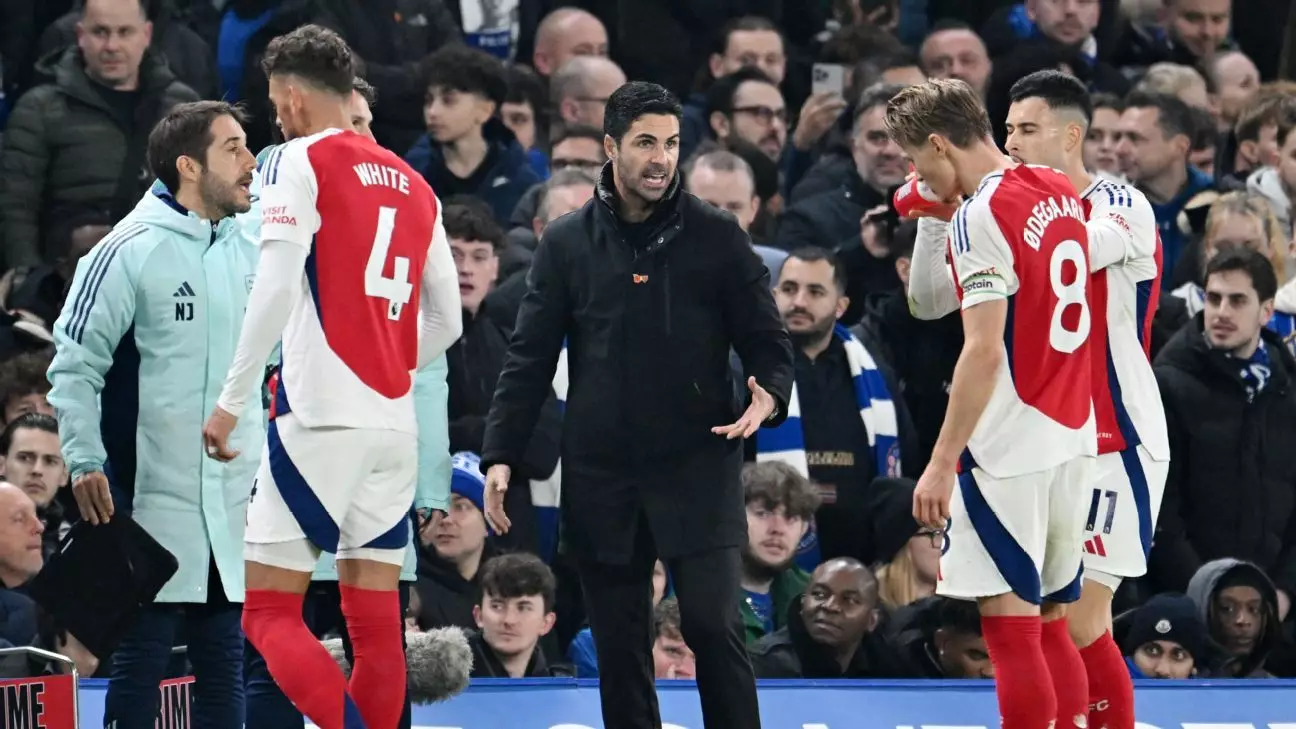Arsenal’s Premier League campaign has been marred by a slew of injury troubles, prompting manager Mikel Arteta to voice his concerns and hopes for recovery during the ongoing international break. With a patchwork squad struggling to cope due to various fitness issues, Arteta’s prayers for physical well-being resonate loud and clear as he aims to regroup before the team faces Nottingham Forest later this month.
Reflecting on the current situation, it’s evident that the injury crisis has transformed Arsenal’s early-season prospects into a precarious balancing act. Arteta’s squad features key players such as Bukayo Saka and Declan Rice, both of whom raised alarms following an intense match against Chelsea. Their early exits from the game hinted at the frail state of their fitness, leaving statements of uncertainty in the air. Rice, having previously played with a broken toe, illustrates the lengths players are willing to go; however, such heroics could compromise their long-term availability.
The absence of pivotal figures like Jurriën Timber and Thomas Partey has compounded Arsenal’s woes. Each injury diminishes the team’s depth and overall performance, forcing Arteta to make tactical adjustments that may not align with his original game plan. The mental toll of persistent setbacks cannot be overlooked, as players grapple with both physical strain and psychological fatigue from the situation.
One notable element of Arsenal’s strategy amidst this turmoil has been the return of Martin Ødegaard, who has only recently stepped back into the fray after a lengthy absence due to an ankle injury. His comeback is crucial, as Ødegaard not only offers technical prowess but also serves as a spiritual leader on the pitch. However, just as one player returns, others seem to be falling victim to new injuries, demonstrating that Arsenal’s medical staff must navigate a minefield of recovery protocols while keeping an eye on player workload.
Arteta’s worries extend beyond just his own squad; he is acutely aware of the broader implications of player fitness on international duty. His intention to speak with Ødegaard regarding his participation with Norway demonstrates a careful consideration of the risks involved in sending a valuable asset back into the fray for national representation amid club struggles. The balancing act between club loyalty and national pride complicates decisions for both manager and player.
The tactical ramifications of these injuries are palpable. Arteta, while eager to articulate his commitment to the squad and confidence in their resilience, cannot deny the unsettling performance trend. Arsenal has dropped a surprising eight points this season from winning positions, a statistic that starkly contrasts the team’s ambitions for title contention. As the manager pointed out, the inability to close out games signals deeper issues in game management and mental fortitude.
The draw against Chelsea served as a case study in what went wrong, begging the question: how can Arsenal maintain leads when it matters most? Arteta’s philosophy revolves around understanding and learning from each match, advocating for a more combative and assertive mentality from his players. By addressing the psychological aspects alongside tactical ones, he hopes to instill a more cohesive unit capable of handling adversity.
Ultimately, Arsenal’s trajectory heavily depends on the recovery of its key players and Arteta’s ability to harness the available talent effectively. The looming challenge is not merely to regain a fully fit squad but also to foster a consistent playing style—one that can withstand pressure and capitalize on advantages.
Arteta’s plea for a ‘prayer’ during this turbulent time encapsulates the unified hope shared by fans, players, and staff alike. The Premier League season is long, filled with opportunities for redemption and growth. Whether Arsenal can navigate the storm and emerge stronger will be determined in the weeks leading up to crucial matches following the international break. The time for resilience is now, and the future could hinge on how well the team responds to adversity.

